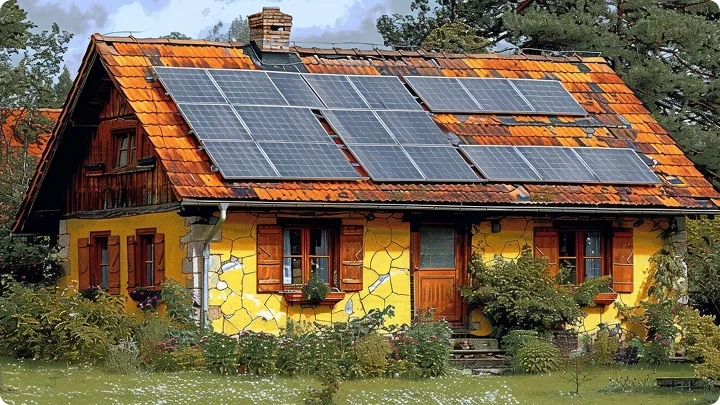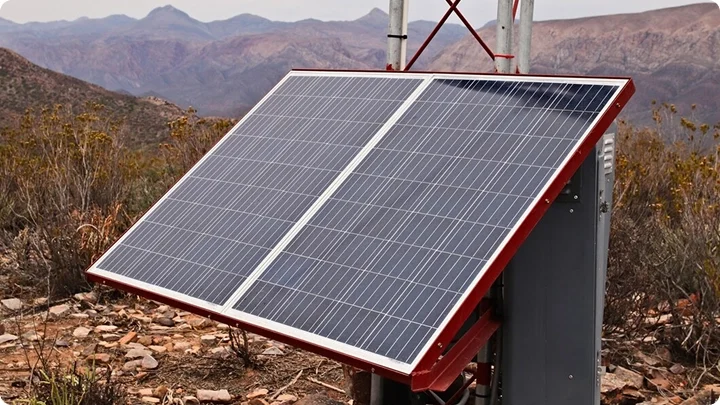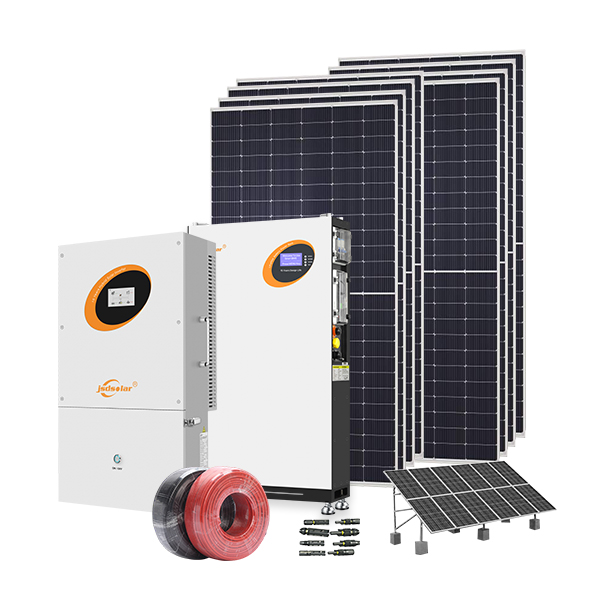Sistema de conversión de energía al aire libre (PCS) Jsdsplar 100kW / 215kWh Sistema de almacenamiento de energía de batería, modo de acoplamiento de CC
100kW/215kWh BESS | PCS Solution | Intelligent Air Cooling | Outdoor Cabinet ESS
Key features
- DC/DC Power Module designed for off-grid scenario to charge battery directly
- Peak shaving and valley filling
- Frequency and voltage modulation for grid
- Modular design allows replace energy storage modules without disassembling
- Smart air cooling and heptafluoropropane fire protection
- Smart EMS energy management system
SEND INQUIRY

Download Sheet

Back to Product List
JSDsolar, proveedor líder de C & I BESS en China
La solución adopta el módulo de potencia Jsdsolar ESS de 100kW y admite 10 juegos en un nivel de protección .lP54 paralelo, sin dejarse intimidar por la gran altitud o la niebla salina. Compatible con los gabinetes de baterías de los principales fabricantes de baterías en el mercado, los fabricantes de baterías no necesitan un diseño adicional y la integración del sistema se puede lograr con un simple complemento.
Technical Data
| Categories | Specifications | Description |
|---|---|---|
| AC Parameters (off grid) | Max Output Power | 110kW |
| Rated Output Power | 100kW | |
| Rated Voltage | 400VAC | |
| Voltage Range | 340~460V | |
| Rated Current | 144A | |
| Rated Frequency | 50Hz/60Hz | |
| Frequency Range | 45-55Hz/55-65Hz | |
| Cable Connection | 3W+PE (+N) | |
| THDi | <3%(Rated Power) | |
| Power Factor | >0.99(Rated Power) | |
| Power Factor Adjustable Range | 1(settable 0.8Leading~0.8Lagging) | |
| On/Off Switch Time | 15ms(Option) | |
| Max Output Power | 110kW | |
| Rated Output Power | 100kW | |
| Rated Voltage | 400VAC | |
| Rated Frequency | 50Hz/60Hz | |
| Cable Connection | 3W+N+PE | |
| THDU | <1%linear; <5%non-linear | |
| Output Over load | 110kW | |
| DC Parameters | Cell type | LFP-3.2V-280Ah |
| Rated Battery Capacity | 215.04kWh | |
| Nominal Voltage | 768Vdc | |
| Voltage Range | 600V~876V | |
| Charge & Discharge Rate | Max.0.5C | |
| Cooling Method | Intelligent Air Cooling | |
| Max Input Power | 120kW or(30kW+30kW+30kW+30kW) | |
| MPPT | PV Max Input Voltage | 730V |
| MPPT Working Voltage Range | 350~900V | |
| MPPT Working Voltage Range @ Full Load | 450~850V | |
| MPPT Max Input Current | 200A Or (50A+50A+50A+50A) | |
| MPPT Number | 1or 4 | |
| System Parameters | EMS | Support |
| Storage Temperature | -20~55℃ | |
| Operating Humidity Range | 0~95%RH | |
| Ingress Protection | IP54 | |
| Working In Parallel No. | 15 | |
| Communication | RS485,CAN | |
| Dimension(DWH) | 176012482350mm | |
| Weight | 2800KG |
Solar Energy Cases
Common Questions
-
What’s a battery energy storage system(BESS)?
-
A battery energy storage system (BESS) stores energy in rechargeable batteries. A system typically has battery cells, modules, racks, inverters, and control systems. BESS are installed for many reasons, like to support the electrical grid, integrate renewable energy, or provide backup power to critical infrastructure.
-
Which kind of BESS(outdoor or indoor) is recommended?
-
Deye’s indoor BESS solution is more cost-effective, but with constraints: its PV input is capped at 65kW, load power at 50kW, and it has installation limits (e.g., high-temperature and fire safety requirements). It is better suited for large residential loads and small industrial/commercial loads. In contrast, PCS outdoor energy storage cabinets enable utility scale possible via parallel connection. Unlike Deye BESS, which uses AC coupling, PCS cabinets can charge batteries directly through DC/DC power modules and feature frequency and voltage regulation—making them ideal for regions with unstable power supply. Additionally, PCS outdoor cabinets have few installation constraints, and their modular design simplifies after-sales maintenance.
-
How does your BESS work?
-
Solar PV panels convert light into DC power, processed by DC/DC modules to adjust voltage to the 750V DC bus (matching energy storage) and enable Maximum Power Point Tracking (MPPT) for maximum PV efficiency. Outdoor energy storage cabinets with forced air cooling contain battery packs and a Power Conditioning System (PCS): surplus PV/grid off-peak power charges batteries via PCS during charging, while batteries release DC power (inverted to AC by PCS) during PV shortage/grid outage/peak prices. The PCS-inverted AC connects to a 400V AC bus (an “energy hub”) via a transformer, linking a diesel generator (backup for grid outage + insufficient storage), the public grid (for surplus power feed-in or off-peak charging/supply), and loads (priority important loads + general AC loads). The Energy Management System (EMS) acts as the control core, enabling remote real-time monitoring of PV generation, battery status, grid/diesel operation, and load power, and intelligently scheduling energy flow based on sunlight, grid status, load demand, and price periods—prioritizing PV for loads and storage charging, using storage then diesel during grid outages, and securing important loads by cutting general ones if needed. Through “PV self-generation + energy storage backup + diesel emergency + grid complementarity”, the system maximizes power supply reliability, typical for scenarios requiring high stability like data centers, hospitals, and critical industrial production lines.
-
Can your BESS work with other fuel sources?
-
Yes, energy storage systems are technology- and fuel-neutral. Battery systems can be charged by renewable energy sources, or can be charged directly from the grid. Electricity from the grid can be generated by any number of technologies, including renewables like solar as well as oil, natural gas, and mostly diesel.
-
How long does your BESS battery last?
-
Batteries typically have a lifespan of at least 20 years, however depending on usage, the batteries may still have usable capacity after 20 years.
-
Any good do your BESS do for communities?
-
Battery energy storage systems are beneficial for communities because of a whole range of indirect benefits they generate. They support energy independence by reducing local reliance on traditional fossil fuels and imported fuel sources to be reduced, and they also make the power grid more efficient and stable, protecting it from malfunctions or blackouts. Energy storage improves energy security and maximizes the use of low-cost, home-grown renewable electricity.
Get Free Quote
Our sale team will give full support and price you needed. We are more than happy to answer your questions within 24 hours.
SEND INQUIRY











